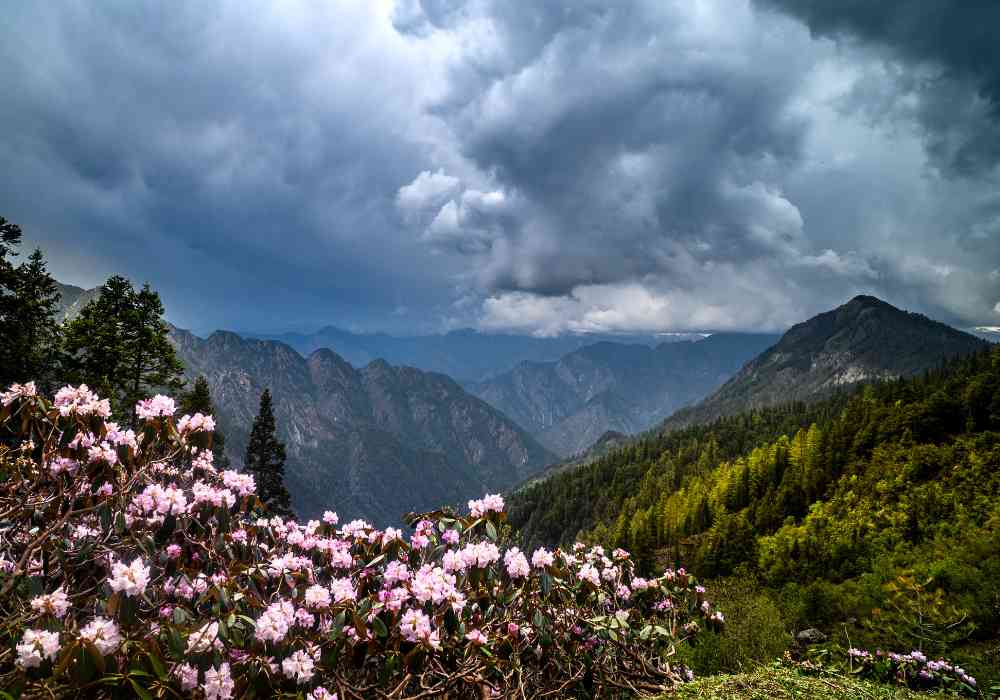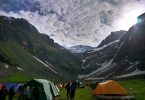The Sar Pass Trek is no laughing matter when it comes to its difficulty level. It falls under the category of a moderate-level trek, demanding not only physical strength but also mental endurance and an abundance of determination. Navigating through narrow paths and conquering steep inclines are just a few of the challenges that await trekkers on this adventure. The ever-changing weather conditions only add to the excitement, and the occasional slip on icy terrain adds a thrilling touch to the overall experience. However, don’t let these factors intimidate you! The feeling of accomplishment that washes over you when you finally reach the summit makes all the sweat, sore muscles, and borderline hypothermia completely worth it. Moreover, the breathtaking views you encounter along the way, from majestic snow-capped peaks to lush valleys, make the entire journey even more worthwhile.
Now, let’s delve into the logistics of reaching this legendary trekking spot. Firstly, you must make your way to Kasol, a quaint village nestled in the Parvati Valley. From there, the real adventure begins. Prepare yourself for a series of picturesque treks, commencing with the journey from Kasol to Grahan. As you traverse through dense forests, cross streams, and perhaps even catch a glimpse of curious wildlife, you’ll be captivated by the beauty of your surroundings. Moving on from Grahan, you continue your expedition to Min Thach, a serene meadow that will steal your heart with its unspoiled allure. Brace yourself for the high-altitude escapade as you trek from Min Thach to Nagaru. This particular section will truly put your endurance and acclimatization skills to the test, but the breathtaking panoramic views of the snow-capped peaks will serve as a constant motivation to persevere.
READ MORE: HOW TO REACH SAR PASS TREK

Next in line is the challenging trek from Nagaru to Biskeri Thach, pushing your limits even further. The steep ascent and rocky terrain may seem daunting, but always remember, you are a valiant warrior embarking on an epic quest! Finally, you make your way from Biskeri Thach to Barshaini, signifying the end of this unforgettable journey. Therefore, my fellow adventurers, it is crucial to note that the Sar Pass Trek is not for the faint-hearted. It will push you to your limits, test your skills, and reward you with memories that will endure a lifetime.
READ MORE: BEST TIME TO VISIT SAR PASS TREK
The Difficulty Level of Sar Pass Trek

- The Sar Pass Trek is classified as a moderate trek, suitable for individuals who have some prior trekking experience. Several factors contribute to its moderate level of difficulty:
- Altitude: The trek reaches an altitude of approximately 13,800 feet (4,200 meters) at Sar Pass. As you ascend to higher altitudes, the air becomes thinner and oxygen levels decrease. This can lead to altitude-related challenges such as shortness of breath, fatigue, and altitude sickness. It is crucial to acclimatize properly, stay hydrated, and pay attention to your body’s signals.
- Terrain: The trail consists of various terrains, including steep ascents, narrow ridges, rocky sections, and snow patches, particularly in the early summer months. You will encounter steep climbs and descents, requiring good physical fitness, balance, and endurance. The terrain can be demanding and challenging, necessitating careful footing and cautious navigation.
- Weather Conditions: Weather conditions in the mountains can be unpredictable, even during the best trekking seasons. You may experience rain, snow, and cold temperatures, especially at higher altitudes. It is essential to pack appropriate clothing and gear to withstand changing weather conditions.
- Duration and Distance: The Sar Pass Trek typically takes around 04 nights and 05 days to complete, covering a distance of approximately 37 kilometers. Each day involves several hours of trekking, covering varying distances and altitude gains. It requires a good level of stamina and endurance to sustain the duration and distances of the trek.
- Camping and Facilities: The trek involves camping in tents at designated campsites along the route. Basic facilities like toilet tents and a limited water supply are available, but you should be prepared for rustic camping conditions.
The Sar Pass Trek offers a moderate level of challenge and is best suited for trekkers with some prior experience. It is important to be physically prepared, acclimatize properly, and have the necessary gear to ensure a safe and enjoyable trekking experience.
READ MORE: REASONS TO VISIT SAR PASS TREK
FAQs
1. What is the overall difficulty level of the Sar Pass trek?
The Sar Pass trek is considered a moderate-level trek, suitable for beginners and those with some prior trekking experience.
READ MORE: COMPLETE TREK GUIDE FOR SAR PASS
2. Does the trek require any prior trekking experience?
No prior trekking experience is required for the Sar Pass trek, as it is suitable for beginners. However, being physically and mentally fit is important.
3. What factors contribute to the moderate difficulty level?
The factors include steep inclines before the summit, high altitude (up to 13,800 ft), long walking distances, and the need to navigate snow-covered terrain.
4. Is the trek suitable for families and school groups?
Yes, the Sar Pass trek is considered a good option for families and school groups, as it is beginner-friendly.
5. How does the difficulty level vary across different seasons?
The trek is easiest during the summer months (May-June) when the trails are clear of snow. It becomes more challenging during the monsoon (July-August) and post-monsoon (September-October) seasons.
Ready to start the trekking Adventure to Sar Pass?







